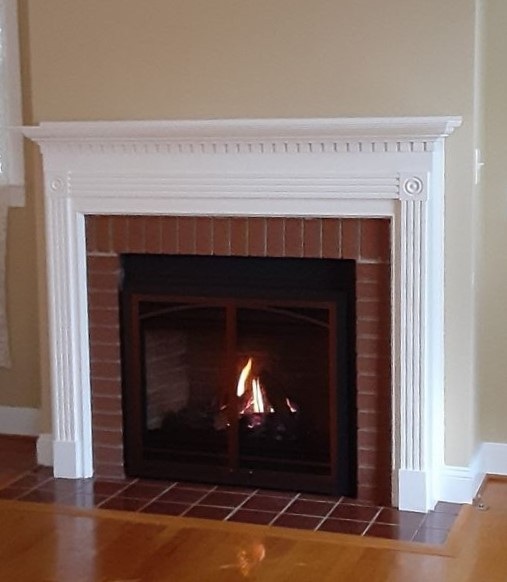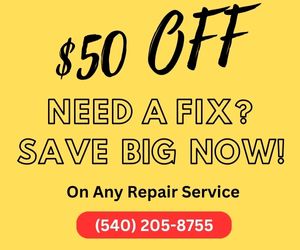On a chilly winter evening, nothing can compete with the comfort of curling up in front of your fireplace, right?
However, to enjoy the warmth and coziness of your chimney corner, you need to maintain it well.
Yes, we know that fireplace cleaning might not be a regular stop in your housekeeping routine, but you certainly shouldn’t put it off indefinitely.
Also, you need to keep in mind certain dos and don’ts to make sure you do it right.
But first, let’s start with a couple of reasons why fireplace cleaning is so important.
Fireplace Cleaning: Why You Need It?
Your chimney puts a lot of effort into ensuring you and your loved ones have a dependable heat source throughout the cooler months.
However, they frequently need more cleaning and maintenance than other types of heating.
Regular cleanings not only help your fireplace run more efficiently, but they also help to ensure that it’s working as safely as possible.
Following are four main reasons fireplace cleaning is a necessity:

1. Enhances Safety
A dirty or ignored fireplace can pose a serious fire risk to you and your family.
Yes, that’s right.
This happens when your fireplace burns wood and produces creosote—a flame-related byproduct—which can accumulate in the chimney and quickly catch fire, eventually spreading to other areas of your house and inflicting serious damage. Your house is especially at risk if there isn’t enough ventilation.
What’s more, even if there’s no fire, your family’s health may still be adversely impacted by an unmaintained fireplace.
This is because soot and creosote can release harmful particles into the air, which can aggravate respiratory problems such as asthma and bronchitis.
With regular fireplace cleaning you can not only prevent such toxic materials from accumulating and lower the possibility of a chimney fire but also improve the indoor air quality of your home.
2. Lasts Longer
A dirty fireplace and chimney are often very inefficient.
This is because smoke and gases can have a tougher time escaping if soot, debris, creosote, and other contaminants obstruct the flue. (A flue is basically a duct that collects smoke and waste gases from your fireplace.)
With such blockages, smoke may come back into your house instead of going up the chimney, making it harder to start and maintain a fire.
This means that now your heating system is working harder and using more energy to heat the room.
However, with regular fireplace cleaning, such blockages would no longer exist, and you can save energy with a more efficient fireplace. In fact, regular upkeep will keep your fireplace in good working condition and also extend its life.
3. Saves Money
Regular fireplace cleaning can help you save tons of money.
Yes, that’s right.
As we mentioned, regular fireplace cleaning reduces the risk of a chimney fire, helps increase your fireplace’s efficiency, and prolongs your chimney’s life.
This means that you can save money on potential fire damage and repairs when your fireplace is less likely to catch fire. Additionally, a clean chimney allows for better airflow, which means the fireplace will burn hotter and more efficiently, leading to lower heating bills.
Finally, regular cleaning can help prevent damage to the chimney and prolong its life, saving money on costly replacements.
Remember, regular cleaning will likely cost you less in the short term than later when you can no longer manage it without professional help and problematic repairs.
4. Improves The Aesthetics Of Your Home
Another plus point of routine fireplace cleaning is that it can help keep your fireplace looking tidy and well-maintained.
A spotless fireplace as the focal point of your living room can surely help improve the overall appearance of your house, making the fireplace an even more enjoyable spot for an evening family get-together.
So, if you want to build extra warmth and a homey atmosphere, don’t neglect your fireplace cleaning!
Now that you realize just how crucial regular fireplace cleaning is, you should also be aware of the dos and don’ts of fireplace cleaning. So, let’s jump right into it!
Dos of Fireplace Cleaning
1. Do: Dress Up Appropriately
Before you even begin cleaning your fireplace, it is important to dress properly to protect yourself from harmful chemicals that may come in contact with you.
Here are some tips for what you can wear:
- Basic dress: You should wear a long-sleeved shirt and pants to protect your skin from fumes or contaminants.
Of course, cleaning will make your clothes dirty, so it’s better to wear old clothes that you don’t mind getting dirty.
Also, don’t forget to wear safety goggles to protect your eyes.
- Gloves: Secondly, you should protect your hands by wearing a pair of thick gloves, especially if you are moving logs and coals around.
- Face mask: A mask will help protect your lungs from soot, ash, or other harmful chemical inhalation.
- Hat: You should ideally also wear a hat or other protective equipment that can help shield your head and hair from any toxic material.
- Shoes: Lastly, you should also wear sturdy, closed-toe shoes to reduce slips and falls.
2. Do: Get The Right Tools
The next step to ensure thorough and efficient cleaning of your fireplace is to get your hands on the right tools. But why?
Well, proper fireplace cleaning equipment allows you to effectively remove soot, ash, and other material without damaging the chimney or firebox.
In fact, using incorrect tools can backfire and instead result in a buildup that can cause a fire hazard or reduce the efficiency and performance of your fireplace.
So, here are some fireplace cleaning tools that you’ll find helpful:
- Creosote Remover
The first thing you can do to kick start your cleaning process is dissolve and remove built-up creosote inside your chimney.
You can do this with the help of a creosote remover, which typically comes in a liquid or gel form and is applied directly to the creosote buildup. Some creosote removers also come in the shape of pellets that can be placed in the fire to emit a chemical vapor.
Whatever the form, creosote removers all work by breaking down the creosote so it can be easily removed with a chimney brush.
- Chimney Brush
This tool consists of a long handle with a brush head at the end that is used to scrub the inside of the chimney.
Just make sure that when you purchase a chimney brush, you get the correct-sized brush head for your chimney.
You should also look for a chimney sweep brush, which is basically a smaller brush with softer bristles.
You can use it in combination with the chimney brush to clean your fireplace’s firebox and smoke chamber and to brush away loose debris and ash.
- Fireplace Vacuum Cleaner
Another tool you can use to clean your fireplace is a vacuum cleaner with a crevice tool attachment.
This tool will make your life much easier because it’ll suck up any loose debris that the brush and sweep may have dislodged. You can also use it to clean out the grate and the surrounding area of the fireplace.
Make sure you use a vacuum cleaner specifically designed for fireplace cleaning, as regular vacuums may not be able to handle the fine soot and ash.
- Fireplace Poker
This is basically a long metal rod with a pointed or flattened end; it can be used to move around logs and coals inside the fireplace and also to redistribute ashes and debris.
- Fireplace Shovel
Finally, a fireplace shovel can be used to remove the ashes from your fireplace. It allows you to safely and easily remove the ashes without making a mess.
However, you should make sure that the ashes are completely cool before attempting to remove them from the fireplace.
3. Do: Check For Animals
Now that you’re in perfect shape to start your fireplace cleaning, firstly, ensure there are no squirrels, birds, or other animals living rent-free in your chimney.
If you skip this step, your chimney cleaning may be far more unpleasant than you anticipated. Furthermore, animal nests can clog the flue and provide a fire threat. If you have these unwelcome house guests, take the time to carefully remove them before proceeding with the sweep.
You should inspect the chimney from the top and bottom for critters. Look for animal indicators such as droppings, nests, or footprints.
If you discover animal evidence, then it is recommended you take your time to first ensure the safe removal of the animal before proceeding any further.
Additionally, some animals, like bats, raccoons, or squirrels, are legally protected, so you could get in touch with a wildlife professional to remove them securely.
4. Do: Protect Surrounding Areas
Let’s face it: fireplace cleaning is a messy task.
If you ignore this part, your furniture will likely be covered in soot and dust once you’re done.
Also, if you plan to clean the fireplace with water and don’t take precautions, you risk water damage to your furniture, walls, and flooring.
So, you should use drop cloths, plastic sheeting, or old sheets to cover your floors, walls, and furniture. Make sure to tape down the edges to keep them in place.
5. Do: Clean From Top To Bottom
While you can clean from inside the chimney by reaching up, it’s preferable to begin at the top and work your way down.
Start by applying your products, such as a creosote remover, as directed by the manufacturer’s safety instructions. Once that’s done, your chimney brush will come in handy; wire bristle brushes are pretty effective in most cases.
Sweep the area by bouncing your brush back and forth against each edge until you have covered the entire region. If you are working with a partner, you can set up a pulley system with one of you at the chimney’s base and the other on the roof.
After working your way down, you can clean the bottom of the chimney using your chimney sweep brush.
Sweep away the remaining creosote and dust, and you’re done.
Also, allow some time for the dust to settle after you finish. Even a fast opening of a door might send dust flying in places you don’t want it.

Don’ts of Fireplace Cleaning
1. Don’t: Use Water To Clean A Hot Fireplace
Water shouldn’t be used to clean a hot fireplace since it could harm the firebox and surrounding areas because it can cause ash or soot to steam and become airborne.
This will likely result in a complete mess as it may leave stains on nearby surfaces.
Additionally, the water may evaporate quickly due to the heat of the fire, making it challenging to clean the fireplace thoroughly.
Another reason not to use water to clean a hot fireplace is that it might cause warping, cracking, or other damage to your firebox if it is built of cast iron or other materials that can be affected by rapid temperature changes.
So, make sure that you allow the fireplace to cool completely before cleaning, and if water is required, use it sparingly with a moist cloth or sponge.
2. Don’t: Use Harsh Chemicals
Since harsh chemicals have the potential to harm the firebox and adjacent surroundings, you should avoid using them to clean your fireplace.
This is because if you use harsh chemicals, the protective coating on the firebox and chimney might be stripped away, which can result in rust and corrosion. Additionally, they may harm any paint or finishes on your fireplace and its surroundings.
Additionally, when applied, some harsh chemicals can emit toxic fumes that are dangerous to breathe.
So, to dissolve and eliminate creosote accumulation from the chimney, you should only use a reliable creosote remover, which is generally safe to use if you adhere to the manufacturer’s instructions.
It’s also worth noting that if you have a gas fireplace, you should never clean the firebox with chemicals or abrasive items since this might harm the gas components and interfere with your fireplace’s performance.
3. Don’t: Vacuum Improperly
If you use a vacuum cleaner near a hot fireplace, it may cause a fire or damage the vacuum cleaner’s motor as it sucks in hot ash and embers. This can be a significant safety issue, as well as causing extensive damage to your device.
So, you must allow your fireplace to cool completely before cleaning.
If you must use a vacuum cleaner, make sure it is a special ash vacuum cleaner with a metal canister and a high-temperature filter that can resist high temperatures. They also typically come with attachments that can be used to reach tight spaces and corners in the firebox and chimney. Also, do check if the vacuum is equipped with a HEPA filter, which can help to prevent the release of harmful particulates into the air while cleaning.
Finally, make sure to regularly empty the canister to prevent obstructions and any fire hazards.
4. Don’t: Wait Until Winter
Delaying your fireplace cleaning until winter can be problematic for a lot of reasons.
For starters, waiting until winter might mean that many chimney sweep services may be fully booked or may only have limited availability.
This means that scheduling your fireplace cleaning beforehand can help you save money because delaying them may result in more urgent and expensive services.
Secondly, cleaning your fireplace in colder months might be riskier because it can be more difficult to access the chimney safely due to damp or icy conditions.
Also, by cleaning the chimney before the start of the winter season, you can ensure that the fireplace is running as efficiently as possible and lower the likelihood of dangerous creosote buildup.
Overall, it is better to schedule your fireplace cleaning in the late spring or early fall before the winter season begins.
5. Don’t: Hesitate To Reach Out To The Professionals
Yes, you can easily maintain and clean your fireplace, given you have the right information, resources, and expertise.
However, if you think there are certain parts of the fireplace cleaning process that you can’t handle or are iffy about your safety—it’s time to call in the experts.
These fireplace cleaning experts have professional-grade equipment and years of experience that you may not have. This enables them to inspect, repair, and clean your fireplace effectively.
Parting Thoughts
Cleaning your fireplace is an important step in ensuring your fireplace operates safely and efficiently.
Some dos of fireplace cleaning include opting for the right tools, using effective repairing and cleaning techniques, and cleaning your fireplace regularly.
On the other hand, some don’ts of fireplace cleaning include using a regular household vacuum, cleaning while your fireplace is still hot, and opting for harsh chemicals or abrasive materials.
By following these simple dos and don’ts, you can make sure that your fireplace performs optimally and continues to serve you longer.
Lastly, do not attempt to clean the chimney yourself if you are not trained or equipped to do so, as this could cause damage or injury.
If you’re looking for a professional fireplace cleaning company in Virginia, get in touch with OHA Home Service right away.










